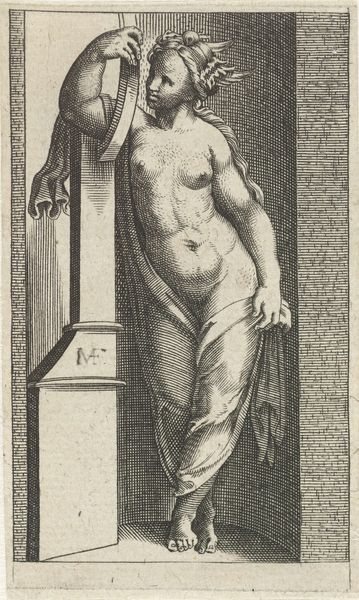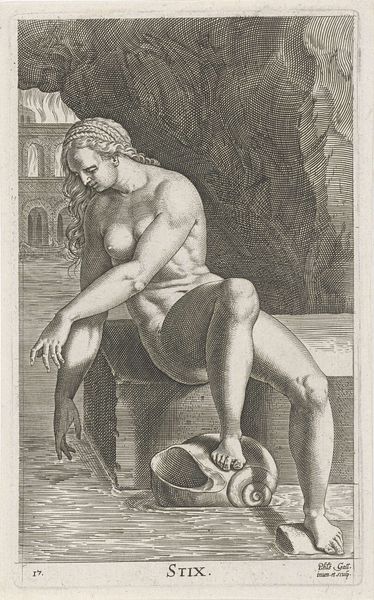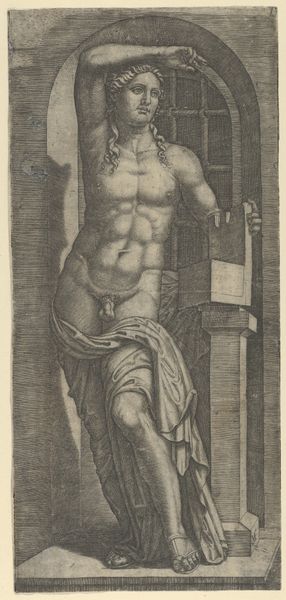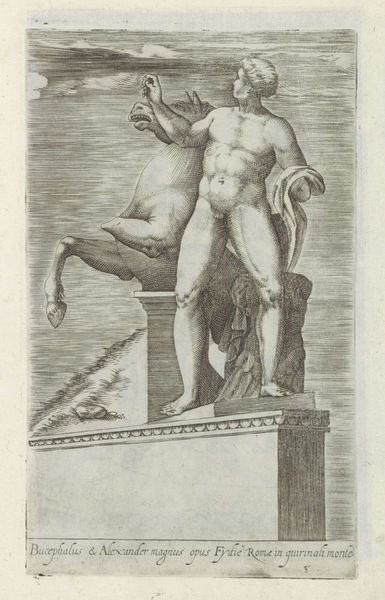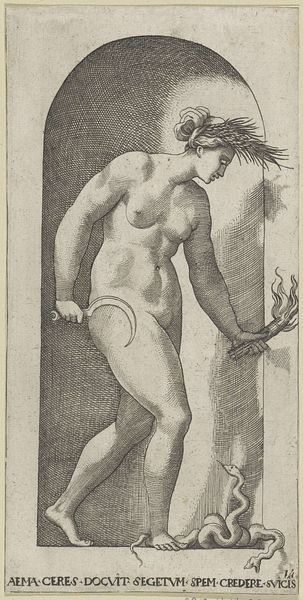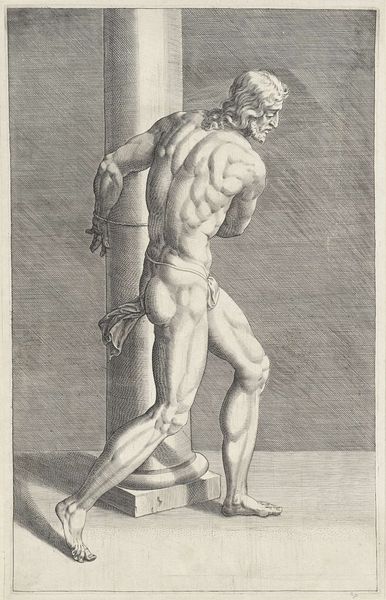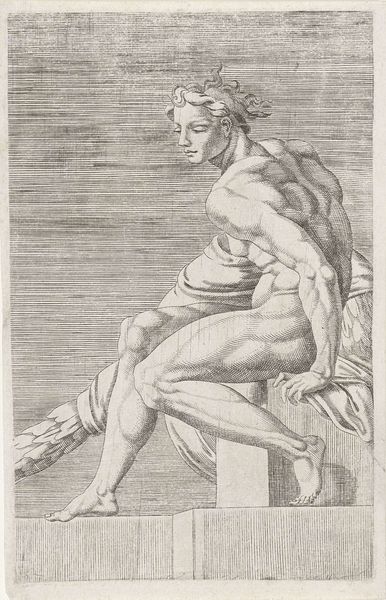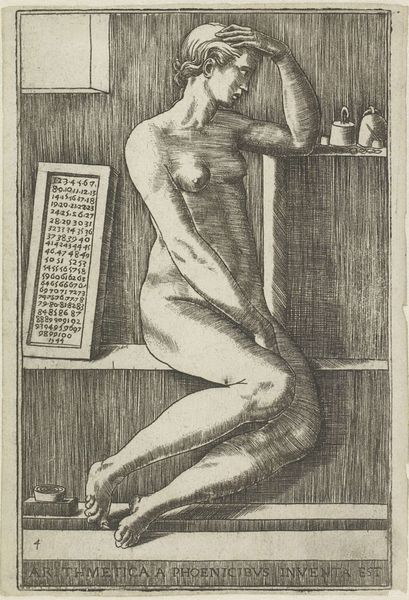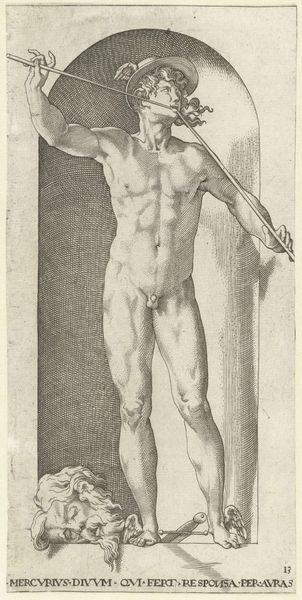
print, engraving
# print
#
landscape
#
figuration
#
form
#
11_renaissance
#
geometric
#
line
#
history-painting
#
engraving
Dimensions: height 165 mm, width 107 mm
Copyright: Rijks Museum: Open Domain
Editor: This is "Geometria" by Giulio Bonasone, an engraving from 1544, housed at the Rijksmuseum. It's fascinating how Bonasone renders the female figure alongside these rigid geometric forms. There is a tension between the organic and the mathematical here, but I am interested in the title: “Geometria.” How should we understand the cultural role of geometry in this historical moment? Curator: The Italian Renaissance witnessed a resurgence of interest in classical knowledge, viewing mathematics, particularly geometry, as fundamental to understanding the cosmos and, by extension, divine order. The phrase inscribed on the artwork translates to, “Geometry was first invented by the Egyptians.” Egyptians used geometry to mark out land after flooding so this may reference its practical social and political purpose. Do you think that might be alluded to by the composition of the image itself? Editor: That’s a good point. The way she’s poised seems to measure or even ‘govern’ those geometric forms – like a ruler, maybe. It feels connected to this bigger idea about human dominion over the natural world through intellect, perhaps. How might its presence in a collection such as the Rijksmuseum reflect the evolving role of science and its role as imagery? Curator: Museums shape historical narratives. By displaying "Geometria," the Rijksmuseum connects this Renaissance print to broader historical themes: the rise of scientific thought, the intersection of art and science, and the continuing human effort to codify, interpret, and control the world around us through the objective reasoning enabled by Geometry. These collections teach us to reexamine art with critical insight of evolving scientific frameworks, thus providing a reflection into societal progression over long periods. Editor: So it becomes more than just an illustration; it’s an artifact that speaks to shifting power dynamics. It is fascinating how this image participates in the evolution and celebration of this body of knowledge. Curator: Precisely. Looking closely and thinking historically allows us to perceive these hidden cultural values inscribed within visual form.
Comments
No comments
Be the first to comment and join the conversation on the ultimate creative platform.
